2021 Tata Safari Test Drive Review
We do a detailed road test review of the 2021 Tata Safari.
We do a detailed road test review of the 2021 Tata Safari.
Home » Car News » Tata Safari » 2021 Tata Safari Test Drive Review
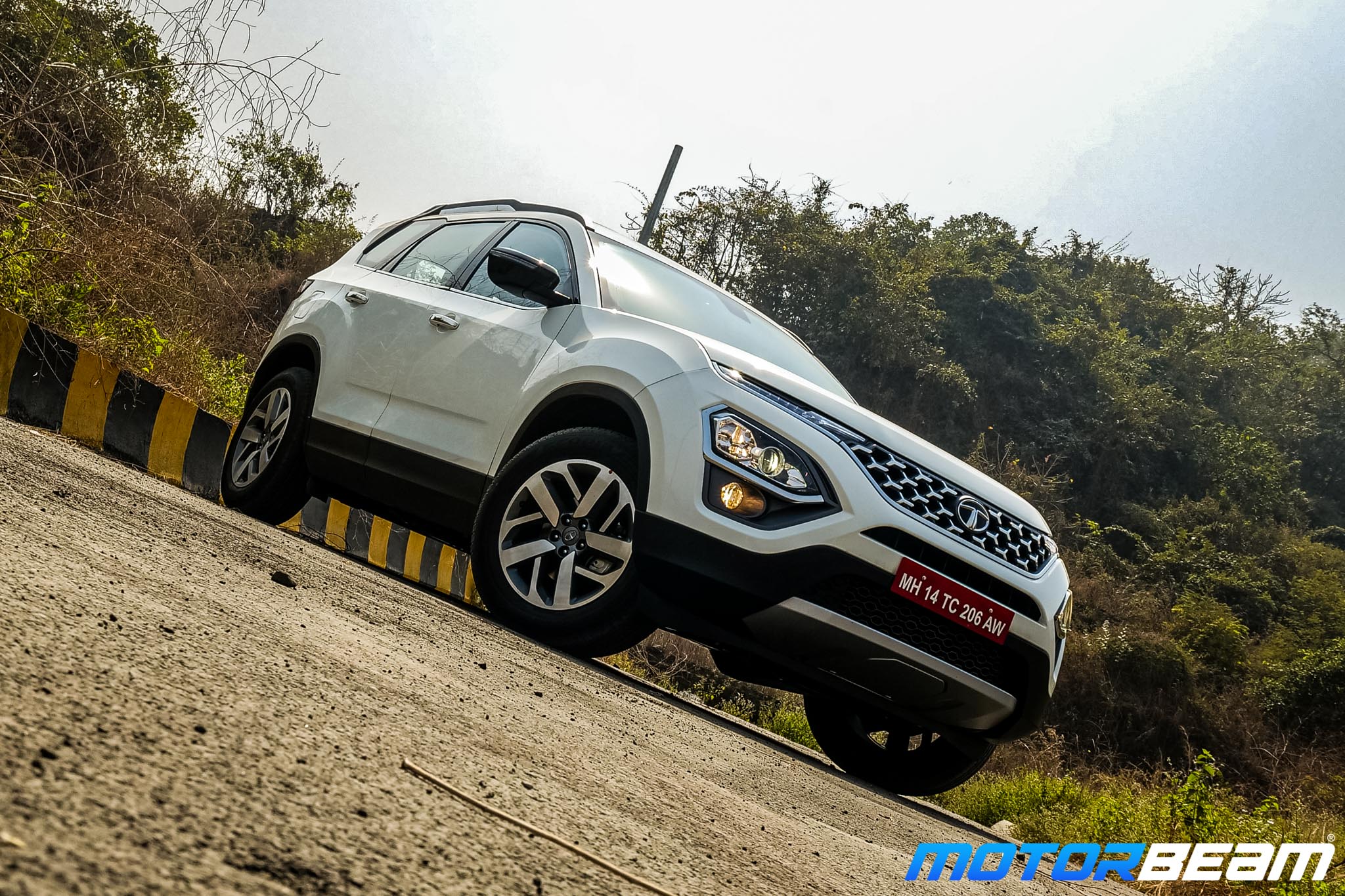
Car Tested: 2021 Tata Safari; Road Test No. 1280; Test Location: Mumbai
Price OTR Mumbai: Rs 18.5 – 26.5 lakhs (est.)
A spacious and feature-loaded cabin coupled with superb road presence and ride quality make the Safari a practical SUV
Tata’s newest 6/7-seater is an SUV which has gone from Buzzard to Cassini to Gravitas to finally Safari. The Tata Safari, as we all know, is a true definition of an icon; an SUV which was not only known for its exemplary comfort and driving feel but also for the kind of emotions it evoked from its spectacular advertisements. 2019 marked the end of the Safari’s era but in a move that has drawn mixed reactions from people, Tata Motors renamed the Gravitas to Safari just ahead of its official unveil. We drive the 2021 Tata Safari and tell you what it offers over and above the Harrier.
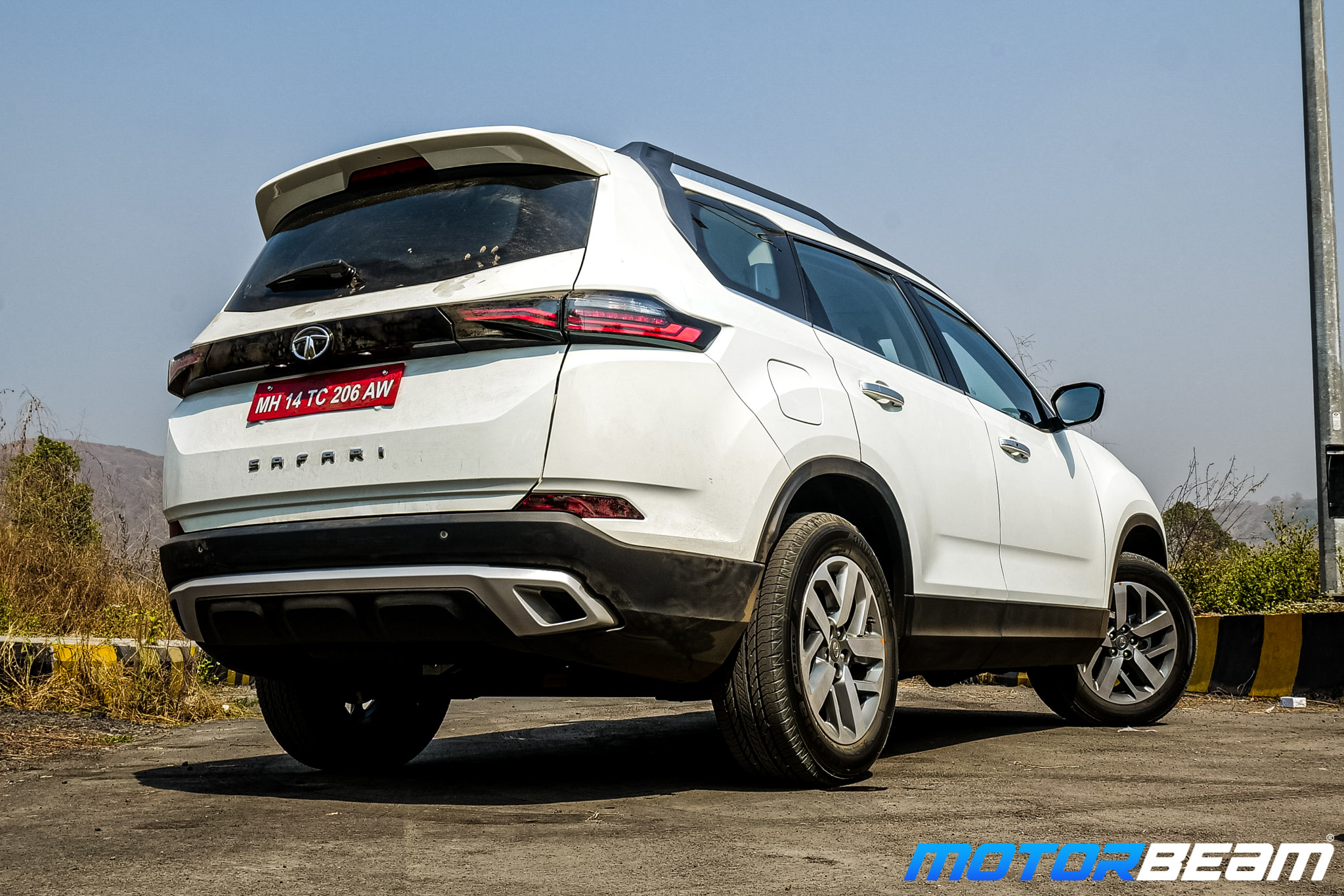
Exteriors – The fascia of the new Tata Safari does look very similar to the Harrier. You get the same DRLs, headlamps, grille, etc. but there’s some additional chrome that has been plastered over the grille. Most of the design changes are visible on the side and rear. The alloys are now 18-inches but the design is similar to the ones on the Harrier, however, the wheels on the Safari get a matte finish. The SUV is 63 mm longer and 80 mm taller than the Harrier but the width and wheelbase are exactly the same. The D-pillar is taller and the roof rails have a stepped-up design.
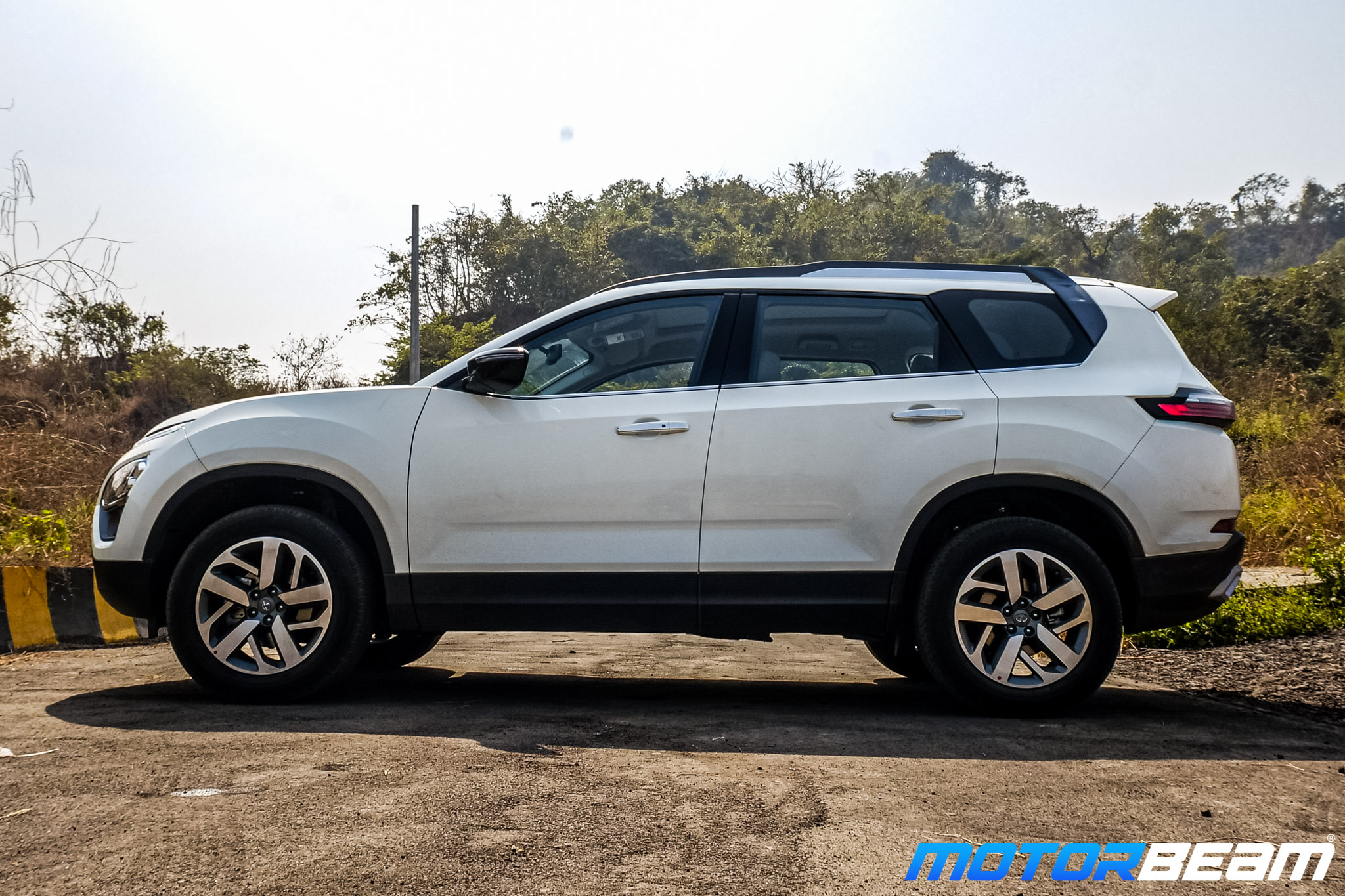
The Safari looks great and boasts of good road presence
One thing to be noted is that the roof gets a seamless design thanks to the panoramic sunroof while the Gravitas showcased at the 2020 Auto Expo had a stepped-up roof due to the lack of a sunroof. The stepped roof has been a signature Safari design element for the older generations of the vehicle. The rear looks nice and proportionate and overall the vehicle boasts of good road presence. The taillights are similar to the Harrier’s but there are some small styling changes. The Safari is offered in three colours – blue, white and grey. The vehicle misses out on hydraulic struts for the bonnet and electric opening/closing function for the tail gate.
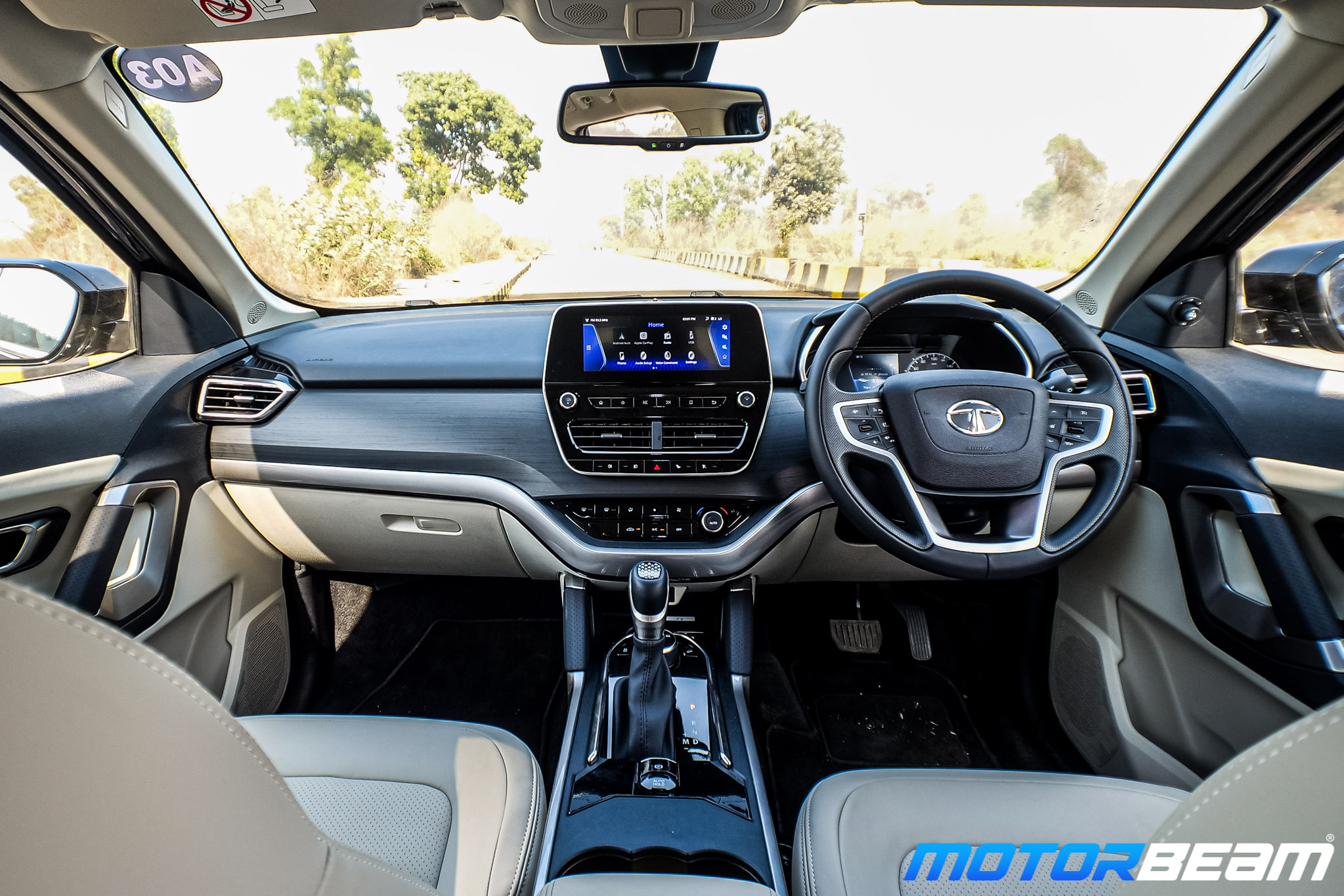
Interiors – Those of you who have been in a Harrier in the past will be at home in the Safari. The dashboard is exactly the same save for the new white coloured upholstery which looks and feels extremely rich and premium. Of course, keeping it clean over the long term could be a slight task. The ergonomics are fine and the outward visibility is pretty good too. You get the same 8.8-inch touchscreen infotainment and the same instrument cluster too. Tata has added an electric parking brake with auto-hold, hence the aircraft-style handbrake lever of the Harrier isn’t present in the Safari which is a good thing because it wasn’t very convenient to use all the time. Some extra space has also been freed up due to this and we were expecting the automaker to add an adjustable front armrest but that’s not the case because the Safari gets the same fixed armrest as the Harrier.
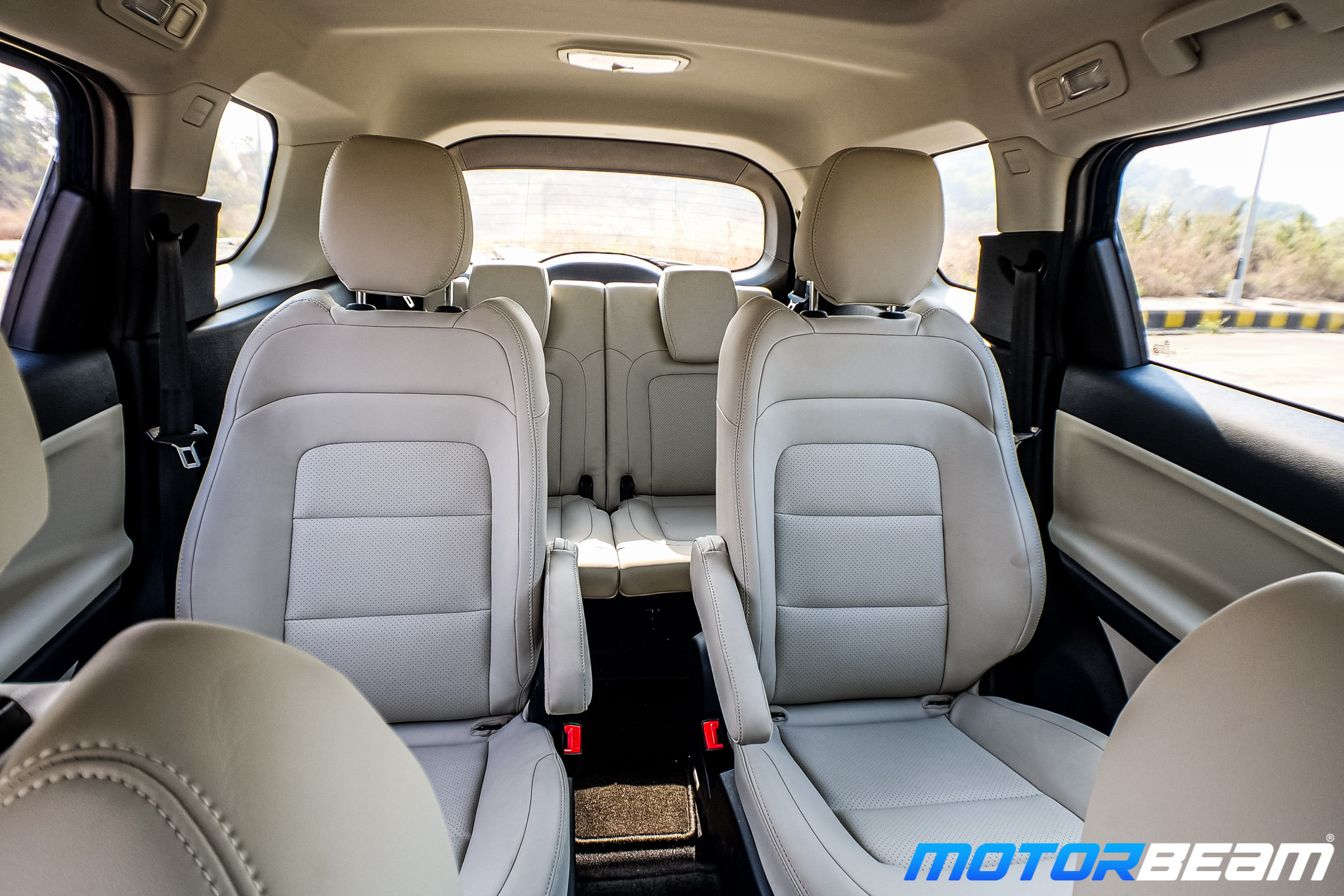
The captain seats offered on the Safari feel extremely comfortable and can also be reclined and slid backward and forward
Tata is offering both 6-seater and 7-seater configurations with the Safari and we got to sample the former. You get captain seats in the second row. Ingress and egress is easy, the seats are very nicely shaped and they offer great comfort. The captain seats are also placed slightly higher than the front seats, so that you get a nice view around. The seats can be reclined and slid backward and forward. There is ample space in the second row and headroom is also more than enough. There’s also a boss mode which lets you move the front passenger seat completely ahead using a knob which is placed on the side of the seat. The captain seats also get an armrest each but the armrest is very slim and if you have even an average-sized hand, your hand will keep sliding off the side of the armrest.
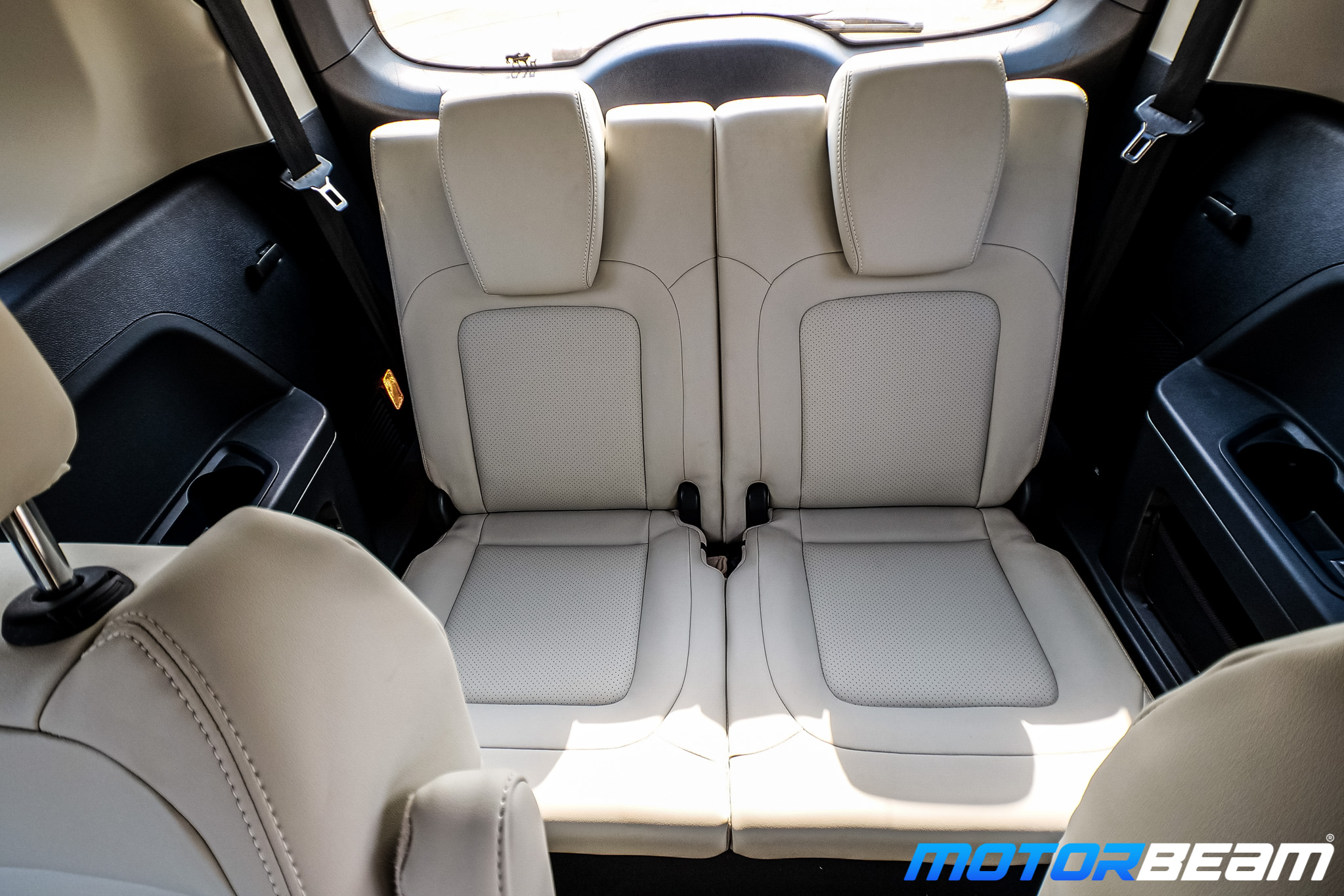
If you want to get into the third row, you’ll have to walk between both the captain seats to get there and it can become a bit tricky for tall or well-built people. The seat is fairly comfortable but it lacks under-thigh support because you sit with your knees facing up. Tata has equipped the third row with two adjustable headrests and two seat belts. Third-row passengers also get a couple of USB ports, a cupholder and an AC control knob. In the 7 seater version, you just need to fold the second-row seat down and get into the third row from the side. The boot capacity is very minimal with all the seats in place but if you fold the third-row seat down, a very good amount of cargo capacity (447-litres) is available which increases to 910-litres once the second-row seats are folded.
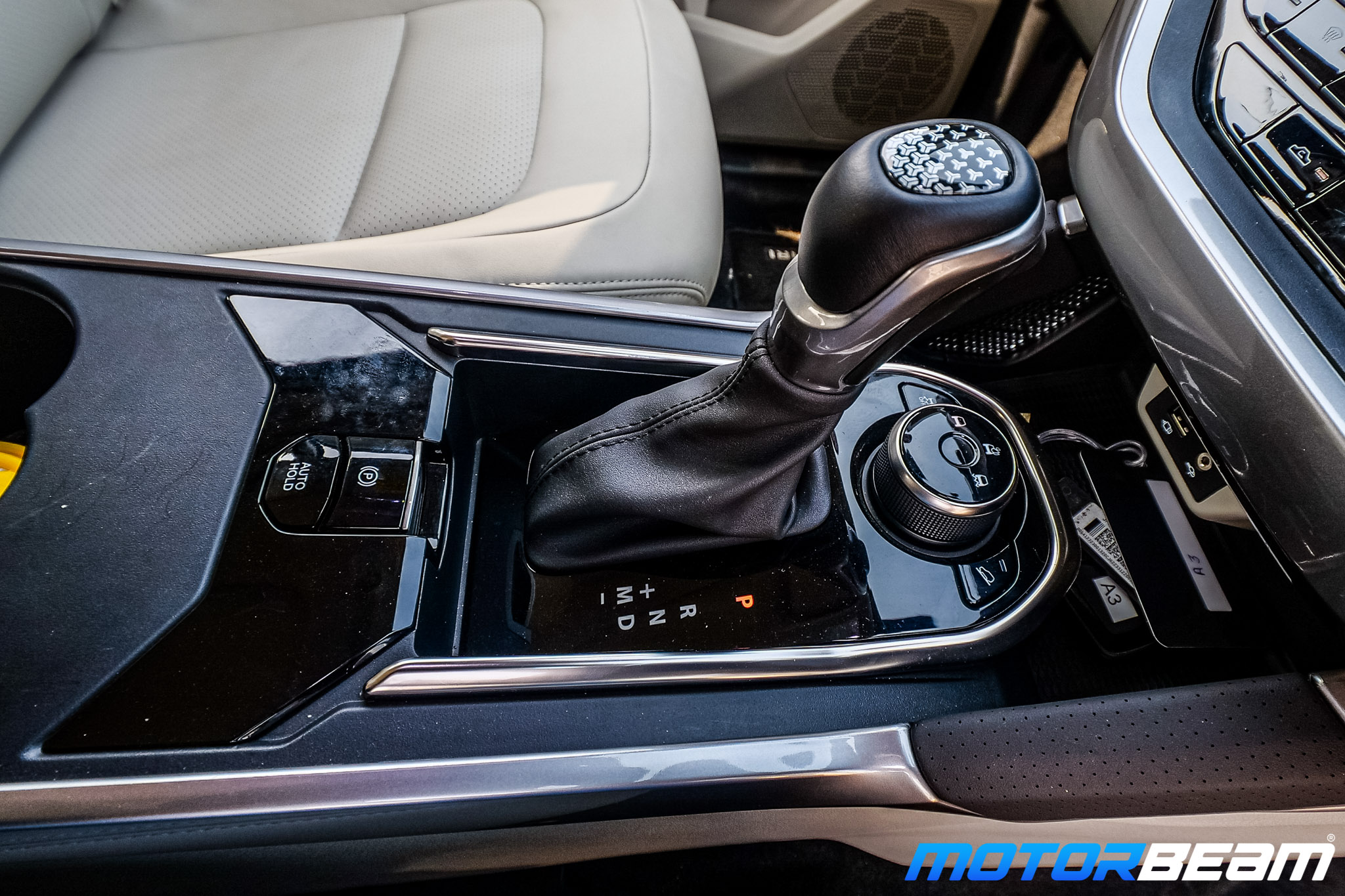
The Safari gets the same set of features as the Harrier along with an electric parking brake
The equipment list remains similar to the Harrier. The Safari gets dual front airbags as standard on the lower trims while you get six airbags on the top variants. You also get an auto-dimming IRVM, auto headlamps, rain-sensing wipers, keyless go with push-button start, automatic climate control and cruise control. Safety kit is shared with the Harrier and the SUV is equipped with ABS with EBD, Brake Assist, Hill Start Assist, ESC and so on. Some features like wireless charging, 360-degree camera and heated ORVMs could have been added. The standard reverse parking camera also has very average resolution and a better one is needed. There are some smart storage areas in the cabin and even the rear doors have enough cubby holes.
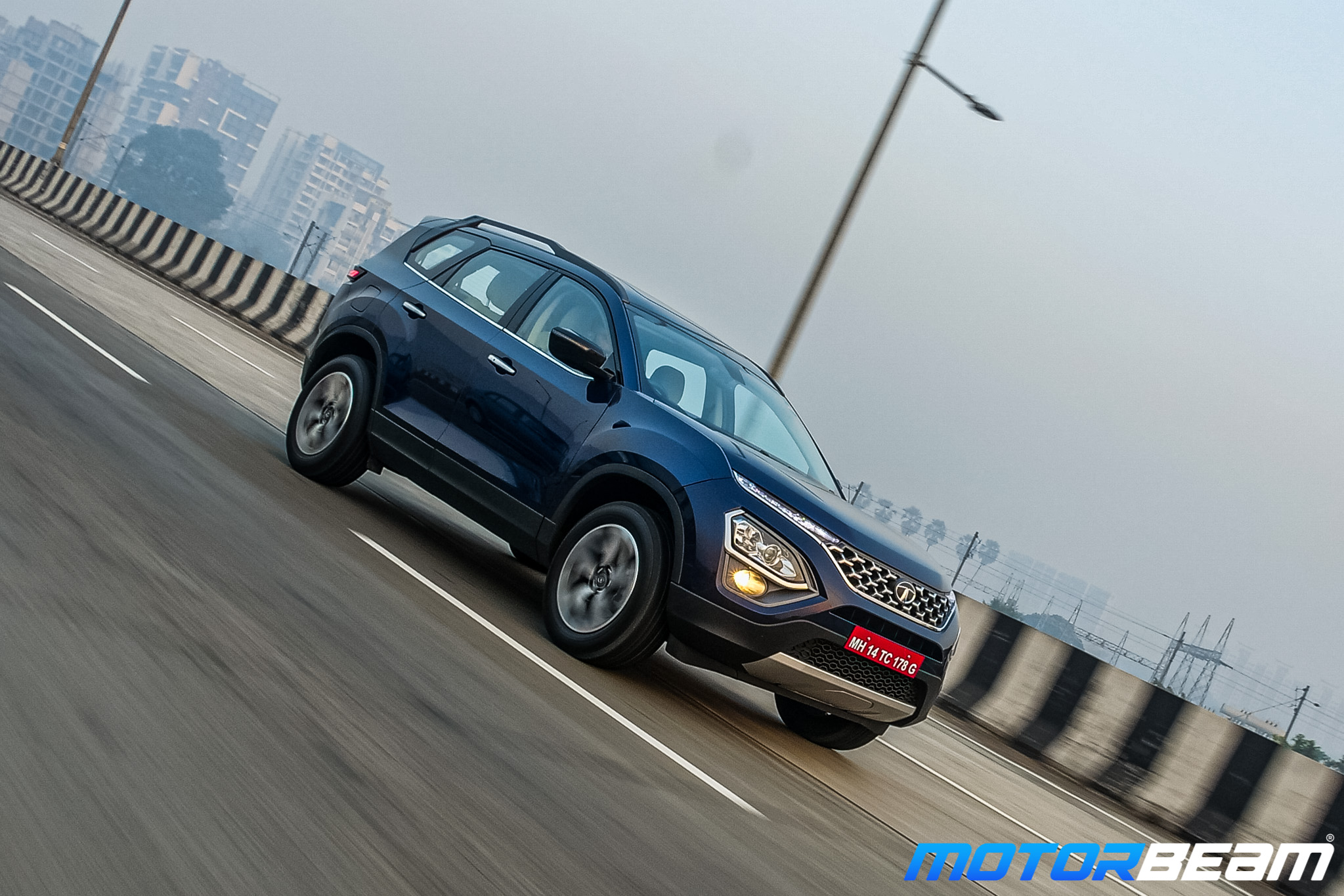
Performance – The Tata Safari shares its mechanicals with the Harrier, so you get the same 2.0-litre Kryotec diesel engine making 170 PS and 350 Nm. The engine fares well in refinement but yes the same engine feels more refined on the MG Hector. Performance is indeed very good and the turbo lag isn’t bothersome at all. The surge that you get in the mid-range is very peppy. Overall, the Safari offers excellent driveability both in the city and on the highways. There are three driving modes on offer – City, Eco and Sport. There’s a noticeable amount of difference in the power delivery in all the modes. The Eco mode is suited for the times when you want to take it easy and this mode also helps you churn out some extra kms per litre while Sport mode makes the engine feel more responsive and eager. There’s a nice sense of urgency in Sport mode while City mode is a good blend of both the modes and works well for regular driving. The Safari doesn’t really feel underpowered even in Eco mode.
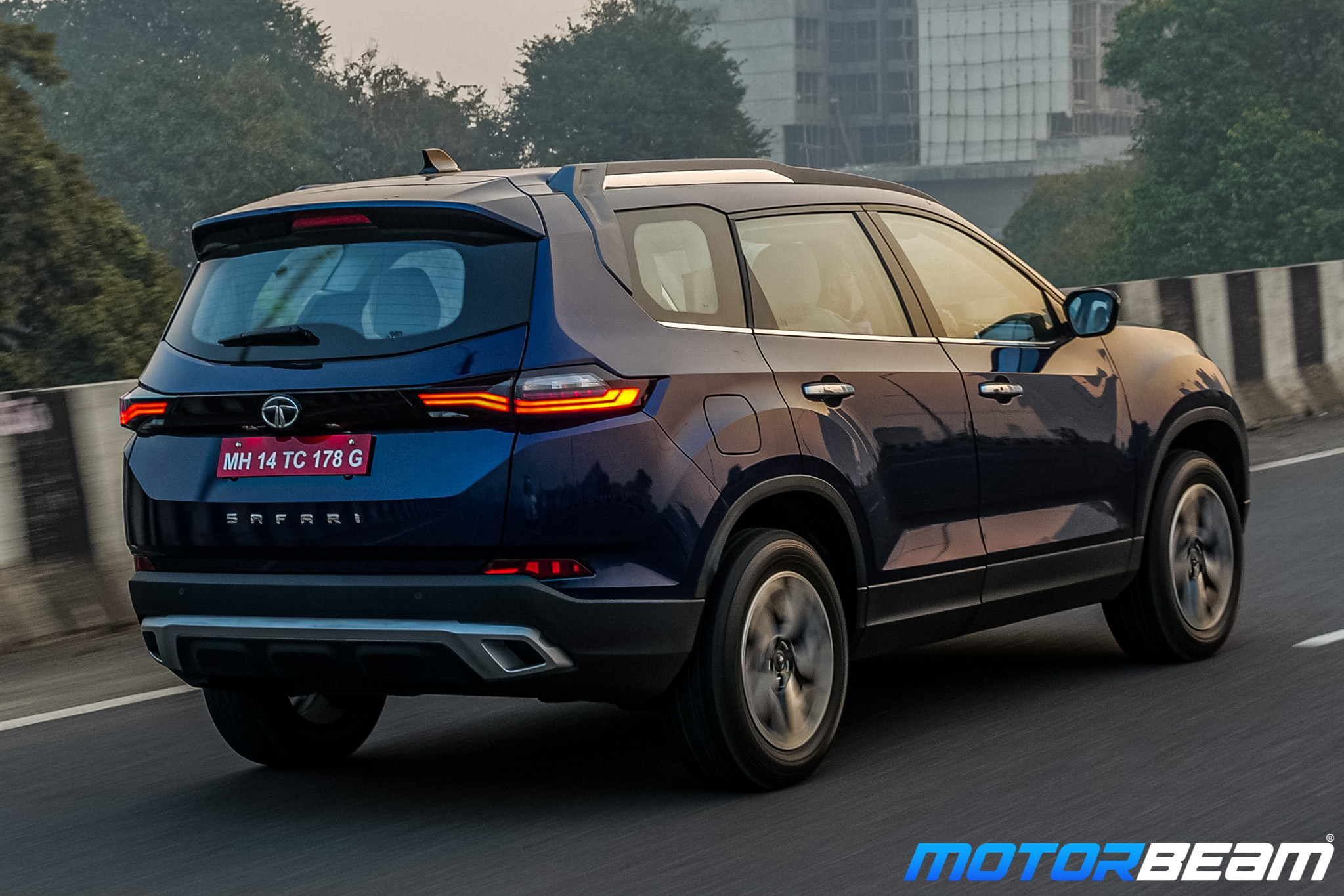
The diesel engine offers very good driveability and never does the Safari feel underpowered
We tested both the manual and automatic variants of the Safari and even did 0-100 km/hr test runs with only the driver and also with a full load of passengers. There’s not much difference in the acceleration timings as such. The Safari AT did 0-100 km/hr in 12.54 seconds with only the driver and 13.91 seconds with six people on-board while the Safari MT did the same runs in 12.51 seconds and 13.87 seconds respectively. The 6-speed torque convertor is smooth, but not lightning quick, yet it does its job very nicely. Sourced from Hyundai, this transmission gets a manual mode too but there’s no S mode. Meanwhile, the 6-speed MT makes the driving experience quite involving and the clutch isn’t too heavy either. The gear shifts aren’t exactly slick and there’s a hint of notchiness associated here. The manual variant is, of course, more fuel-efficient and in the real world, you’ll notice a difference of 1-1.5 km/l between both the variants.
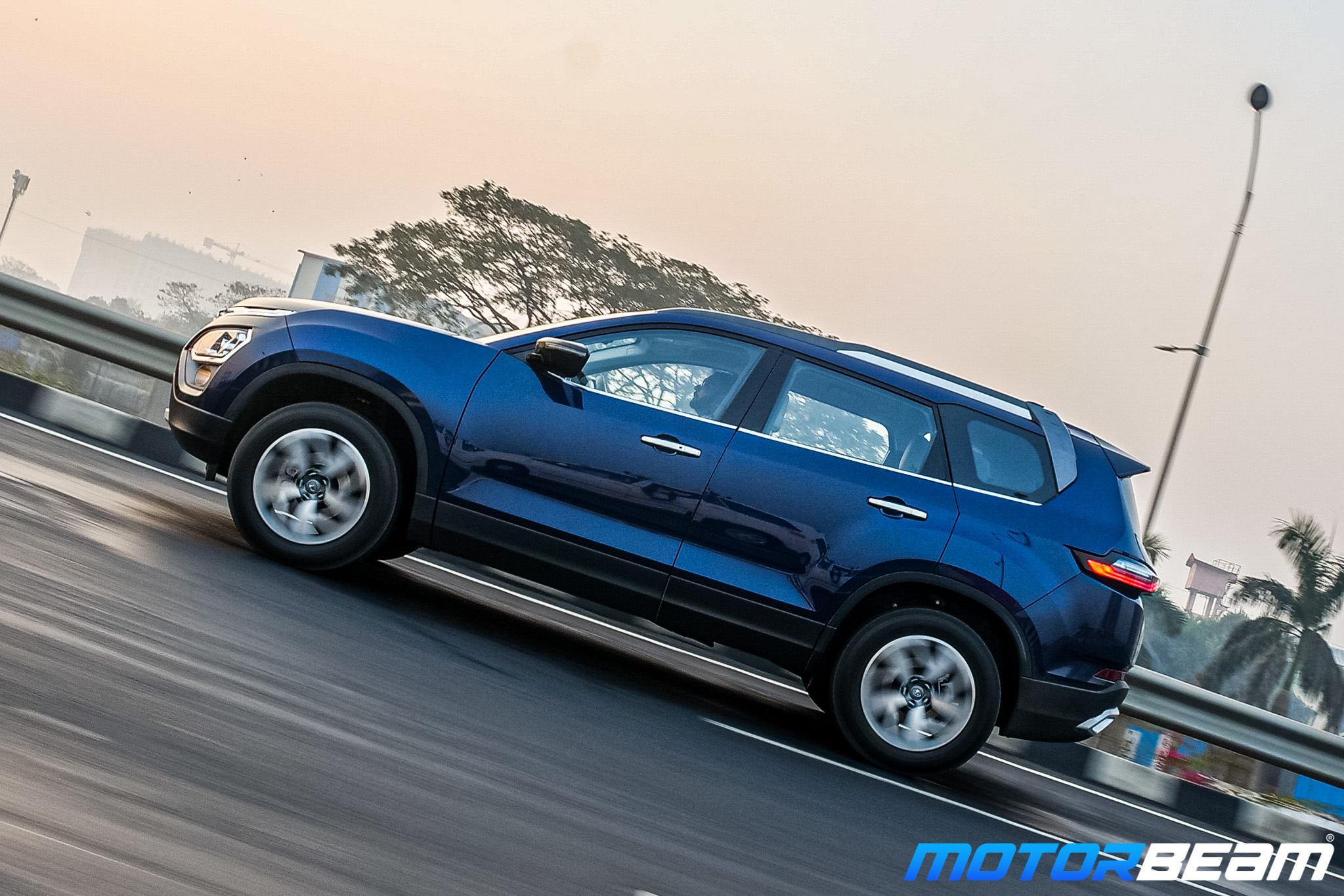
Driving Dynamics – The ride quality and suspension setup have always been the forte of almost every Tata car and this isn’t different. The suspension tuning is almost perfect and the Safari glides over potholes with ease. The ride quality is quite comfortable though not as plush as the Safari Storme. If you encounter an uneven patch at high speeds, you’ll feel some bumpiness in the cabin but the vehicle doesn’t get unsettled as such. The steering offers decent feedback and feels well-weighted on the highways but it also feels quite heavy at parking speeds. With discs on all four wheels, braking power is adequate but because the vehicle is so heavy, the stopping distance isn’t very short if you stomp on the brakes.
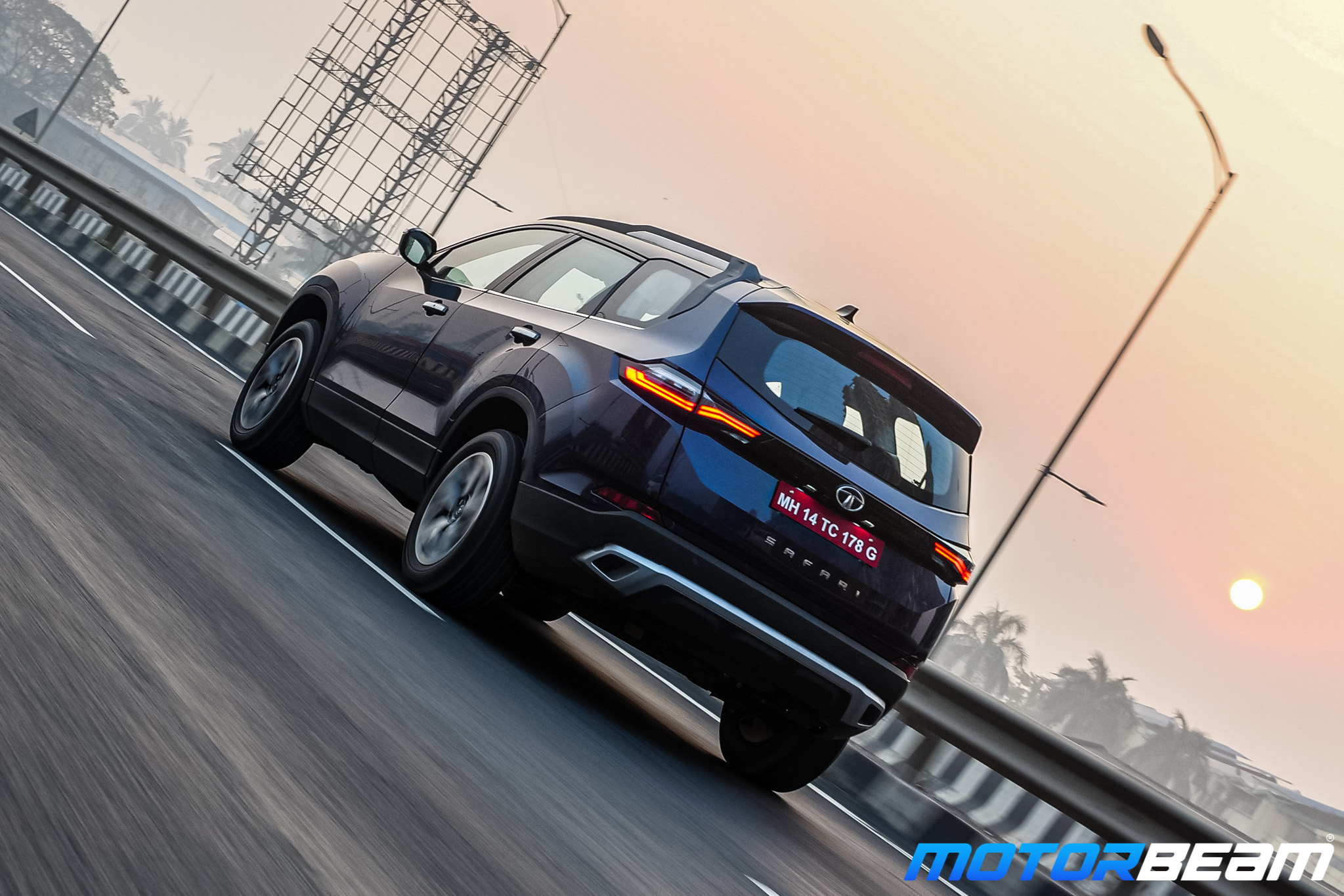
Excellent ride quality absorbs everything in its stride while high-speed stability and brakes are also good
There are three ESP modes – Normal, Rough and Wet allowing you to switch between them based on where you’re driving. We even put the vehicle through a slalom test with the ESC on and off and found a very significant difference in the way the Safari behaved. With ESC switched on (default), the SUV felt predictable and held its line well even though there’s a lot of body roll which is fair given the dimensions of the vehicle. With ESC switched off, the Safari lost its line when pushed hard and needed much more involvement from the driver to manoeuvre it. There’s no 4×4 or AWD on offer even as an option. Tata’s explanation is that the buyer group for 4×4 or AWD is very limited and I completely agree with that but I also feel that either of these two could have been provided as optional on at least a couple of variants. As of now, Tata doesn’t have any 4×4 vehicle in their portfolio because the Hexa BS6 hasn’t been launched yet.
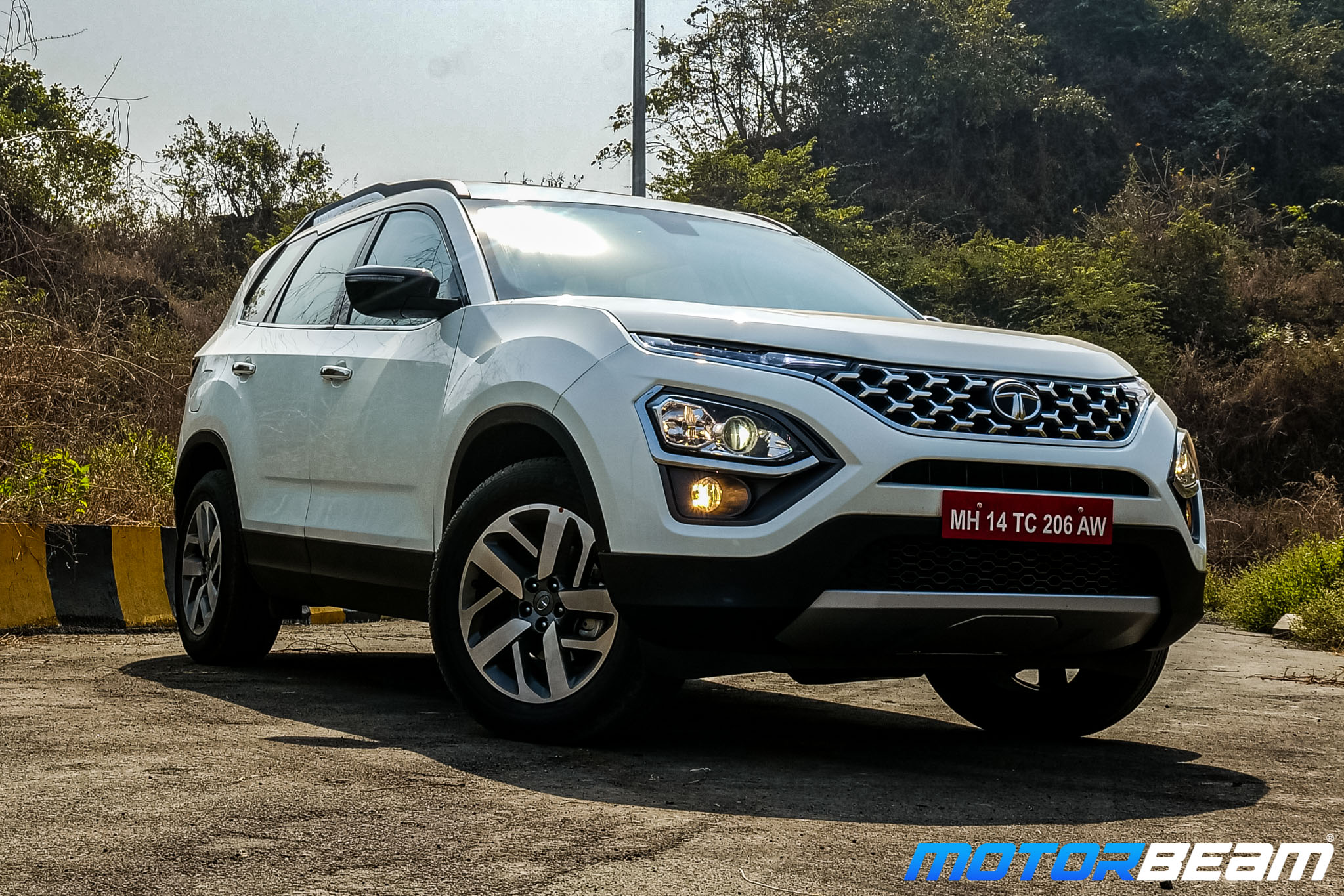
Verdict – The Tata Safari offers few more things over the Harrier. You get an extra row of seats and you also get captain seats. The Safari also offers slightly better road presence than the Harrier. Apart from this, most changes aren’t very significant and overall it is a very good product. It makes sense buying the Safari only if you really need the third row of seats or the captain seats if you’re frequently chauffeur-driven because for everything else, the Harrier is equally good and the Safari is expected to be priced at a premium over its younger sibling. Tata Motors has ironed out a lot of flaws in the updated Harrier and hopefully, the improvements are present on the Safari as well but I personally think there was nothing wrong with the Gravitas name. The real Safari with its ladder-frame construction and 4×4 offered a different experience altogether. From a marketing perspective though, naming this SUV Safari seems like a great move because it is indeed drawing a lot of attention. When Mahindra brings out the new Scorpio and XUV500 in the next few months, competition in this segment will get properly intensified.
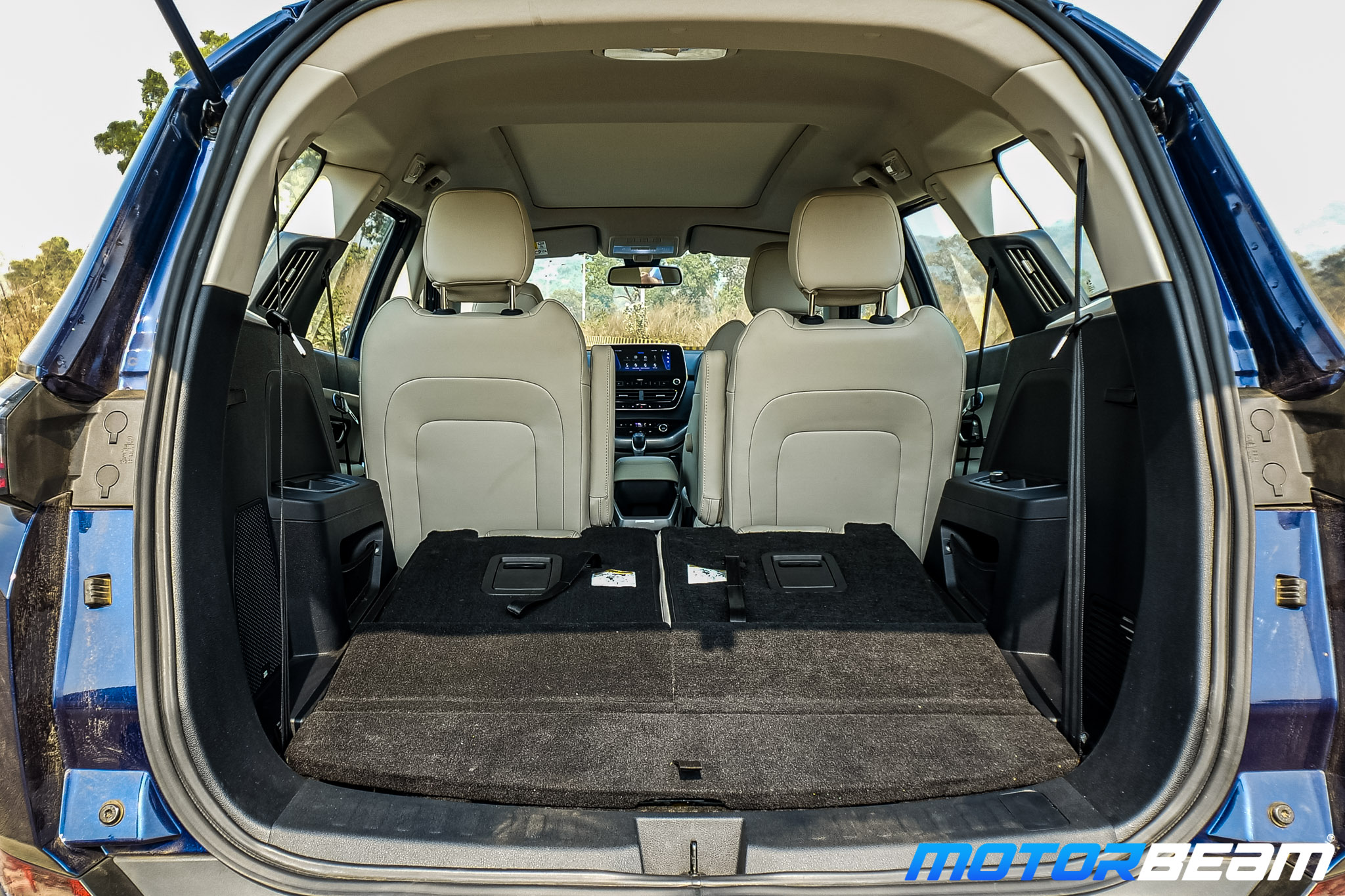
What’s Cool
What’s Not So Cool
Alternatives – Tata Harrier, MG Hector Plus, Mahindra XUV500
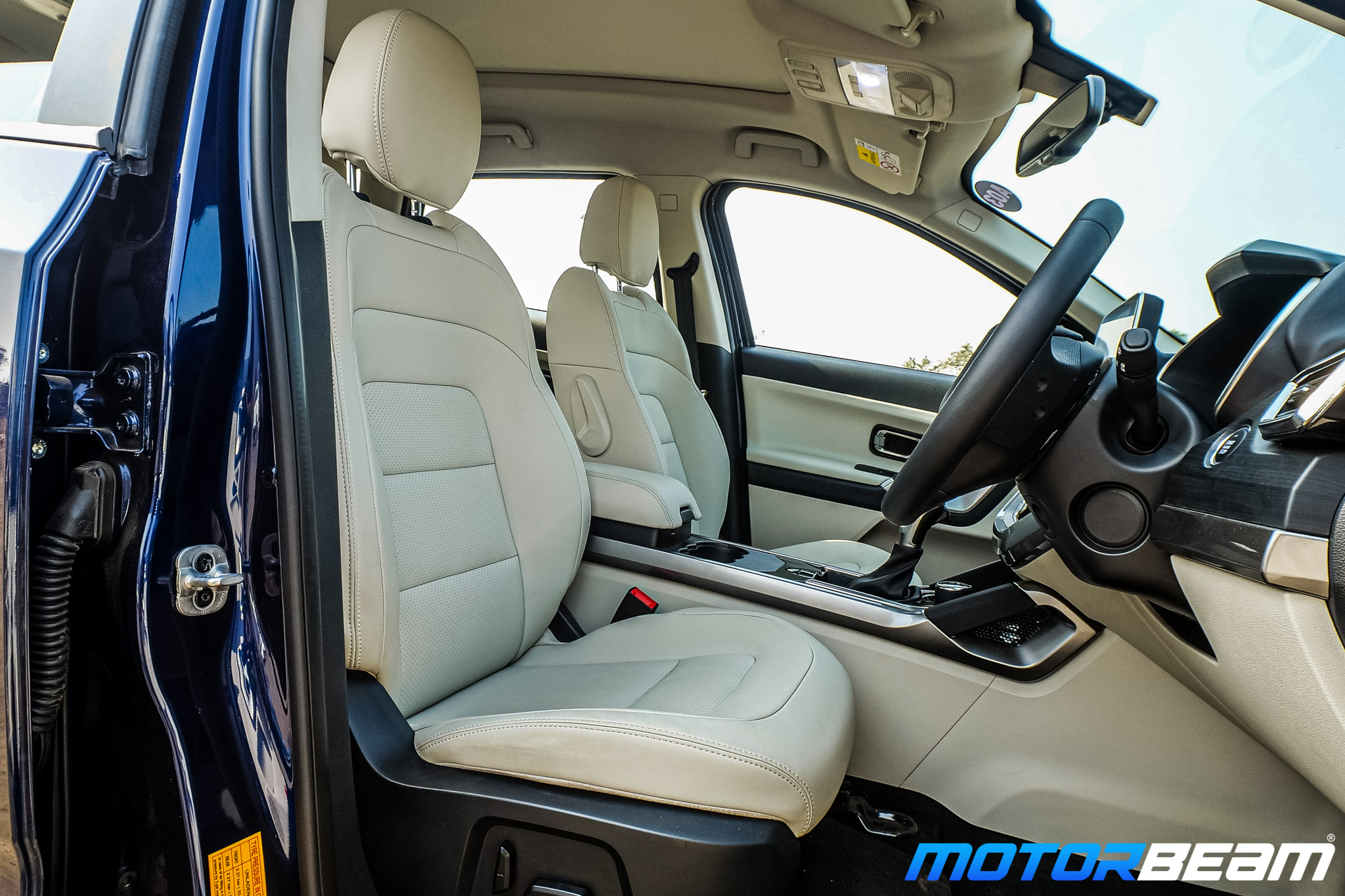
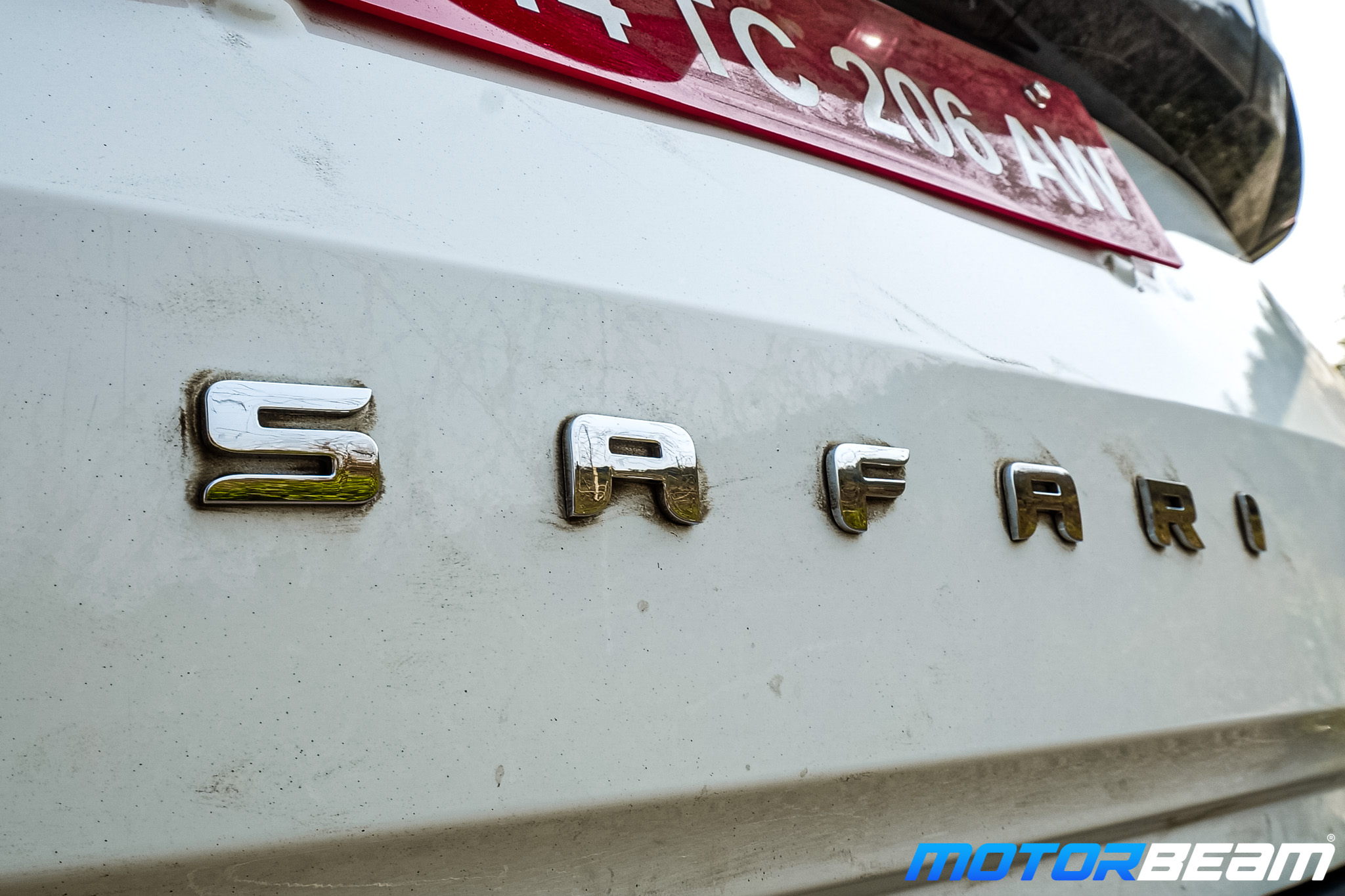
Further Reading –
